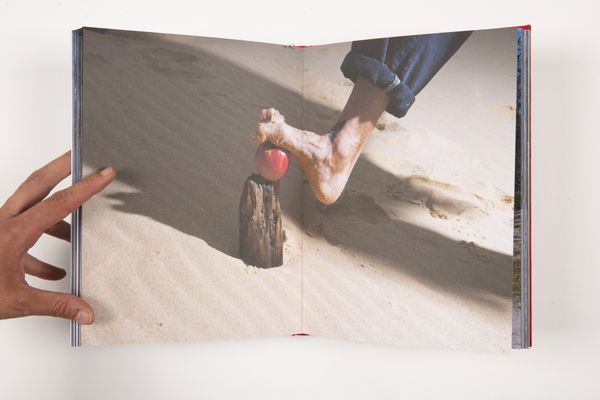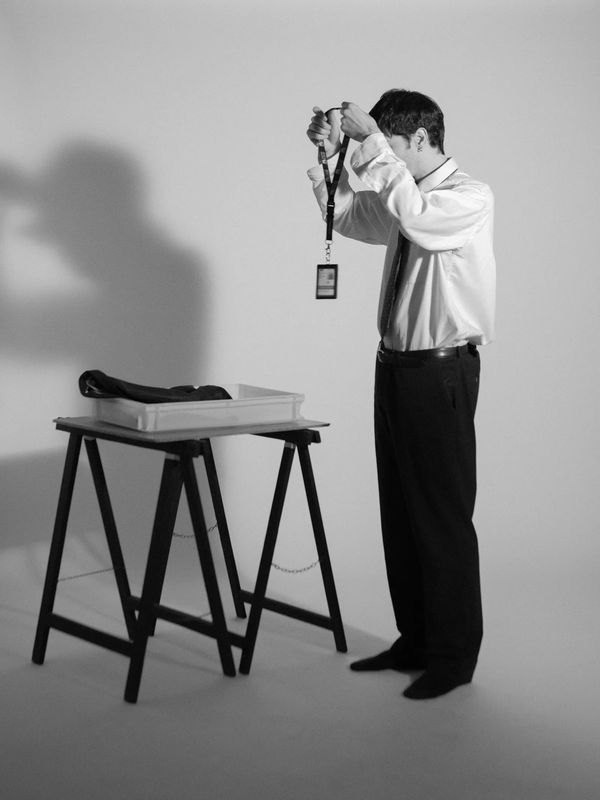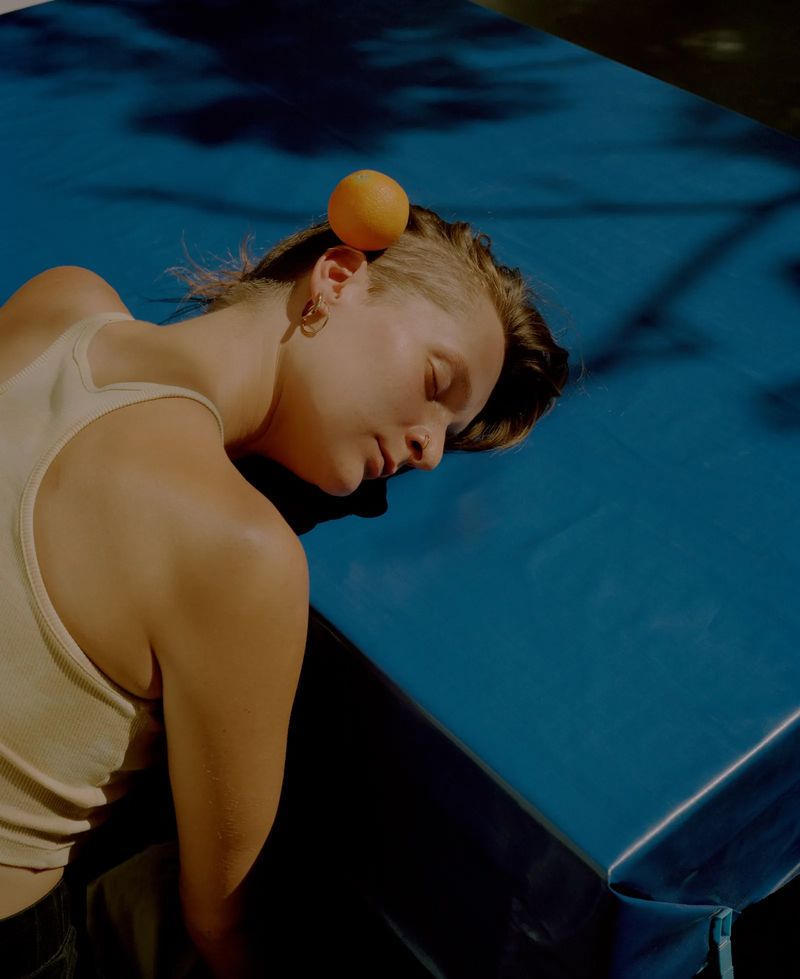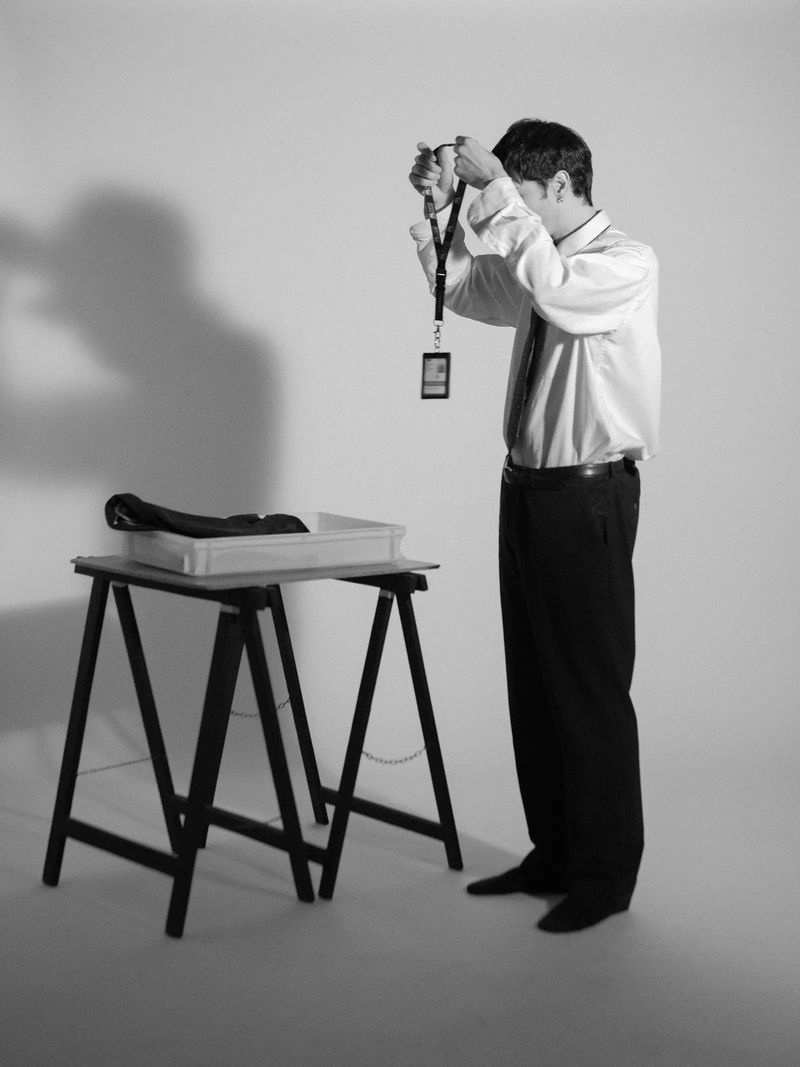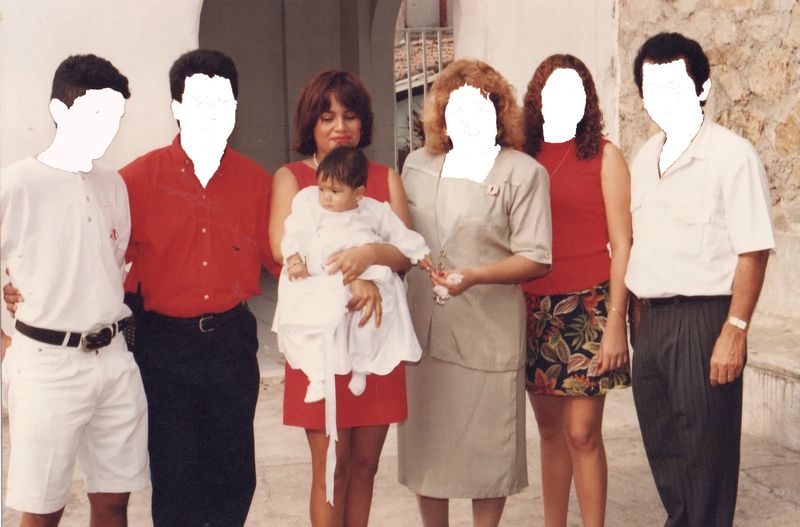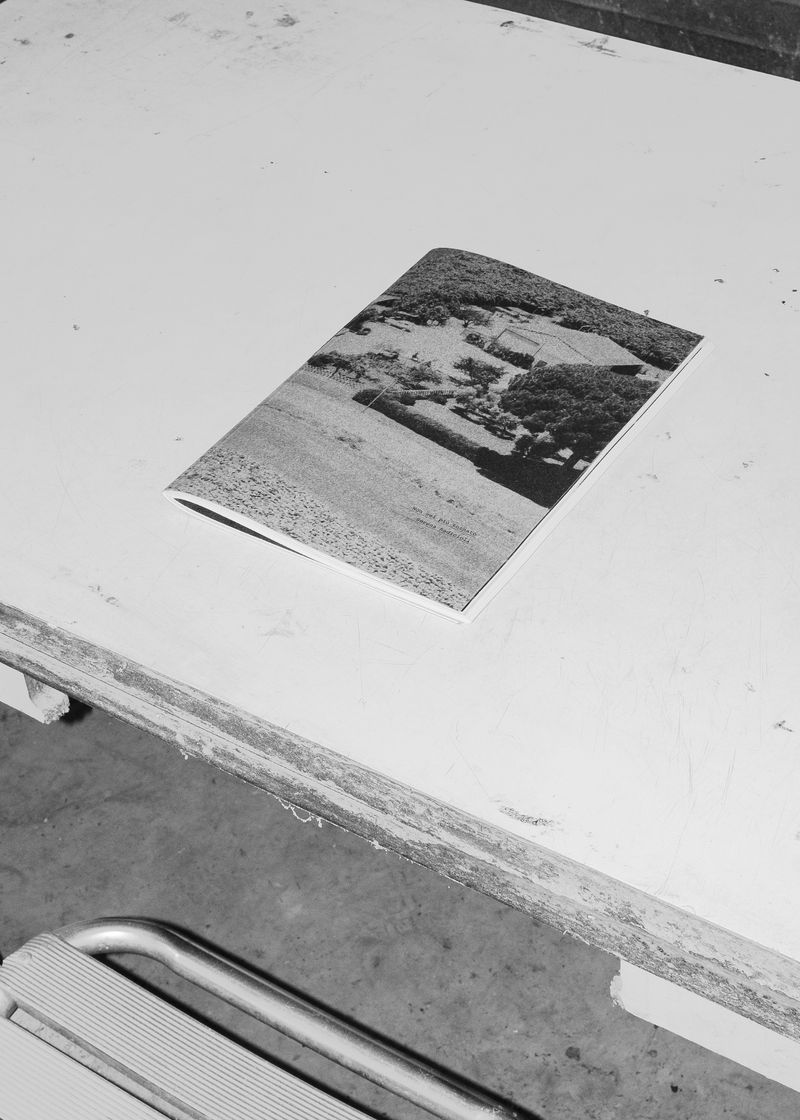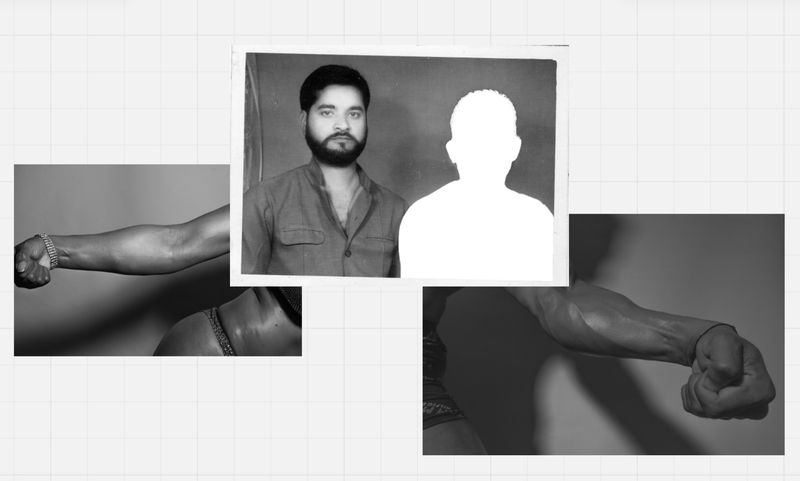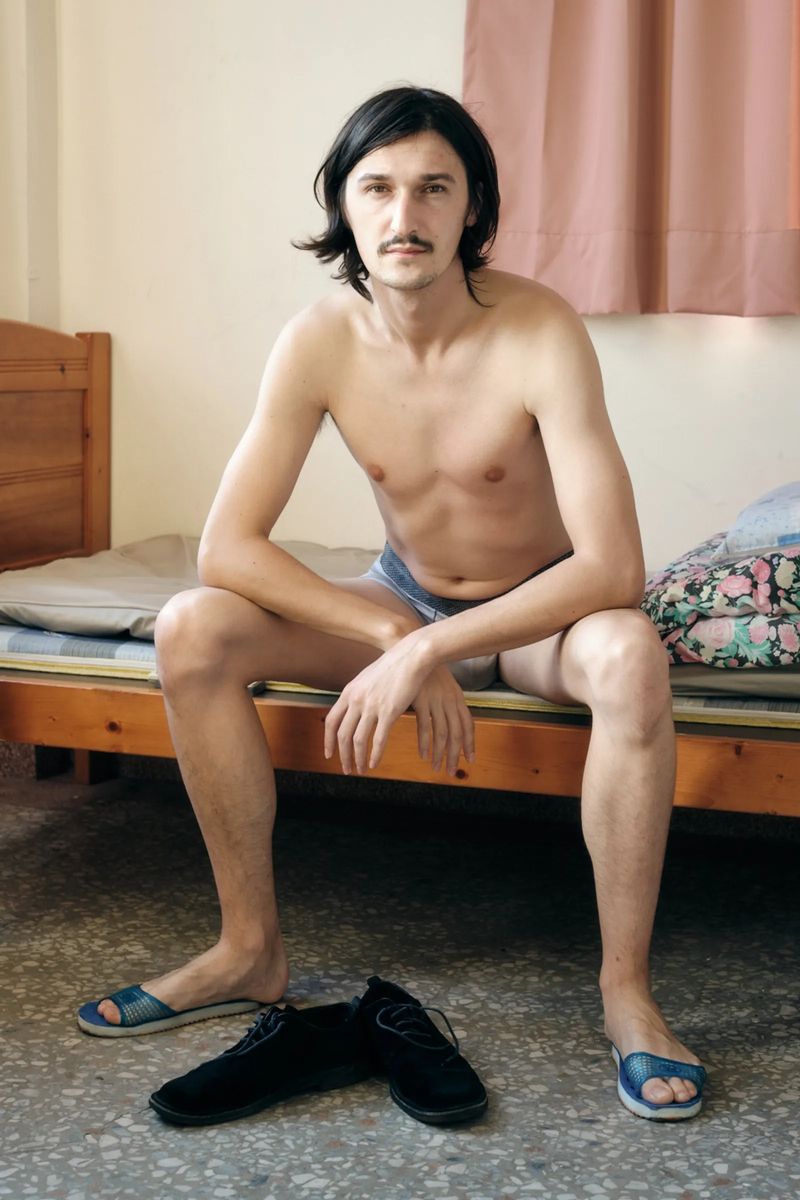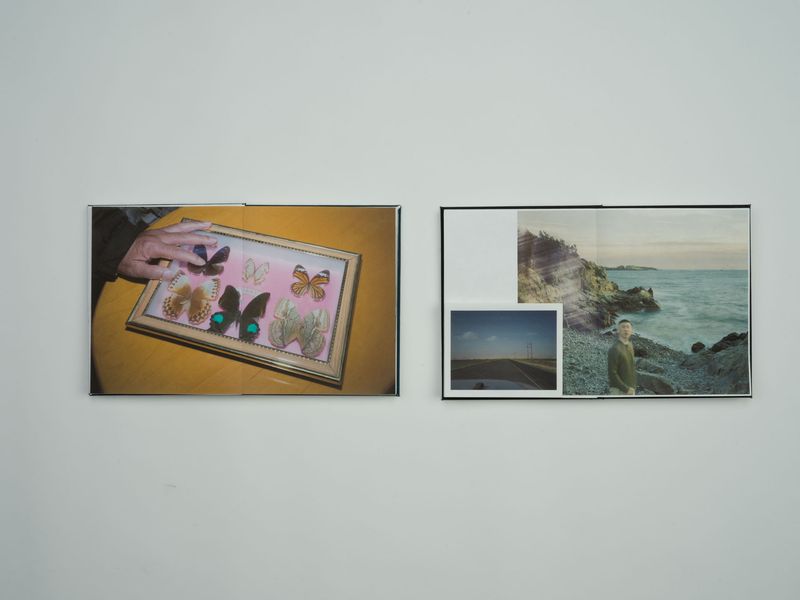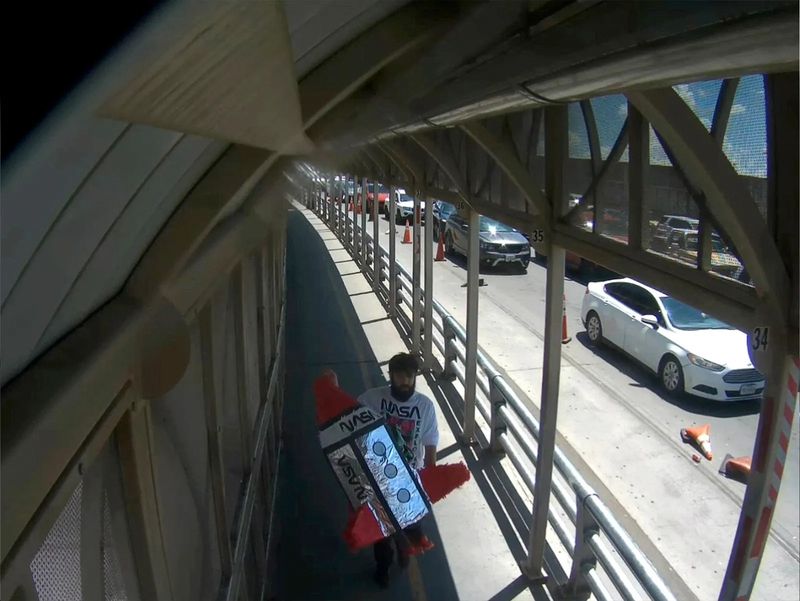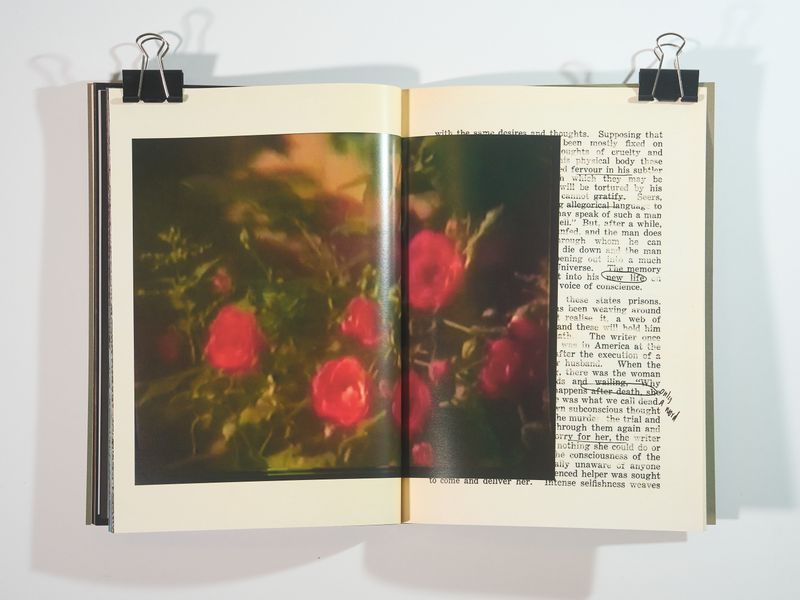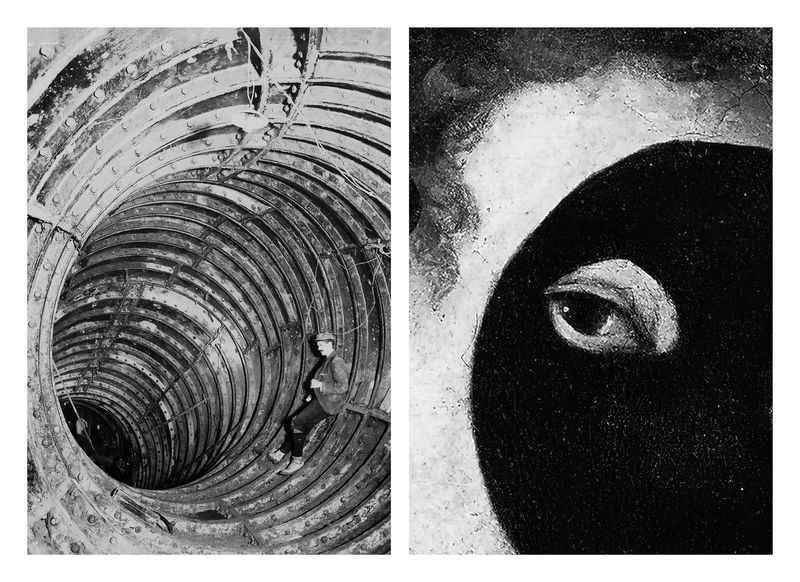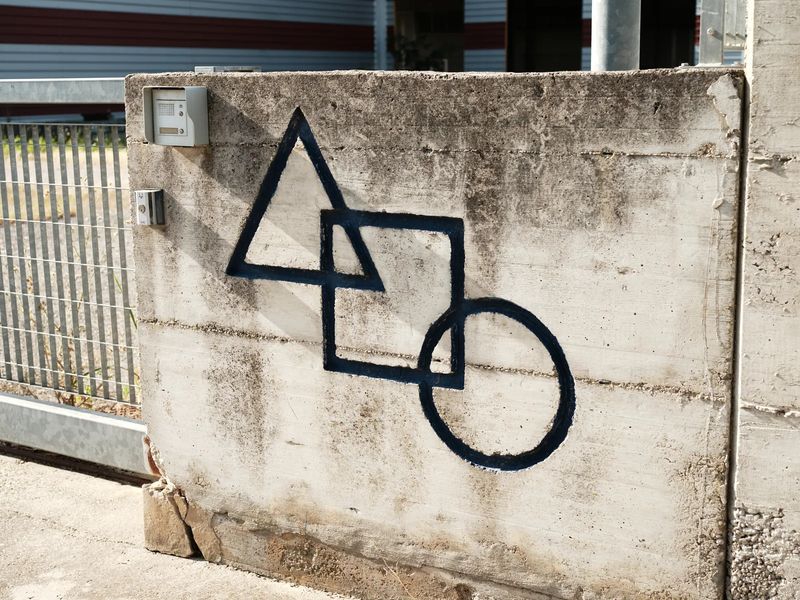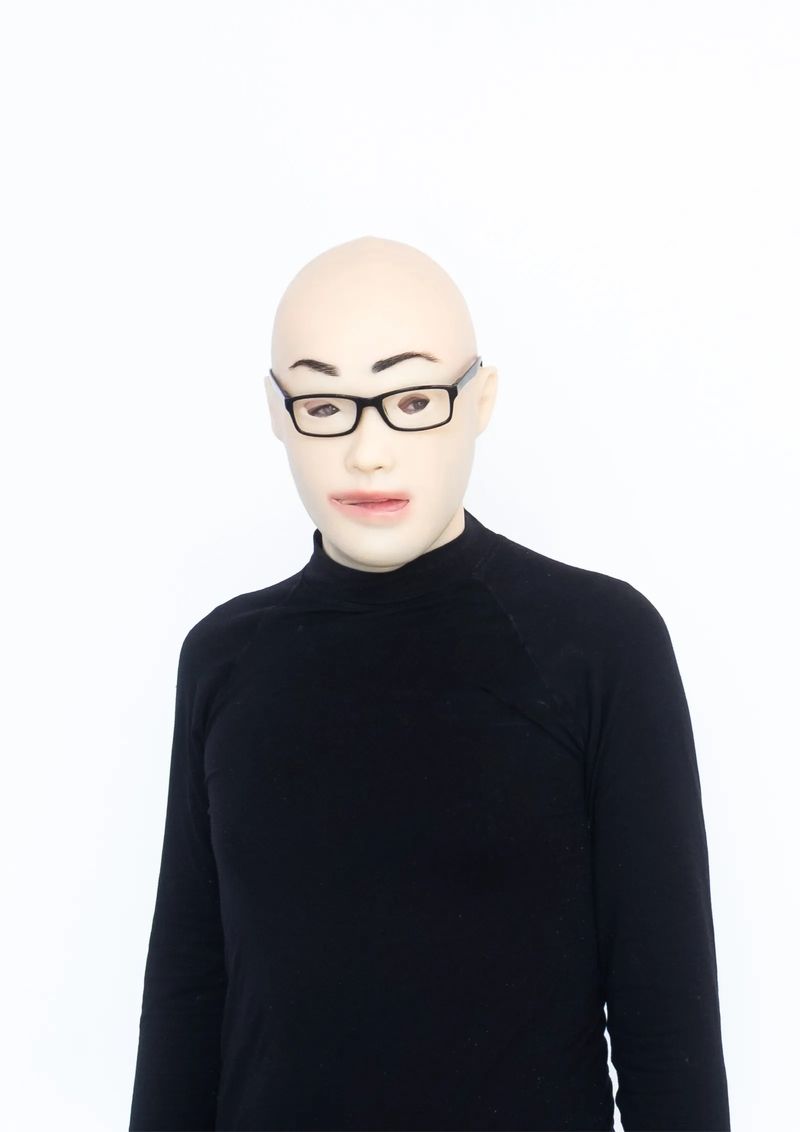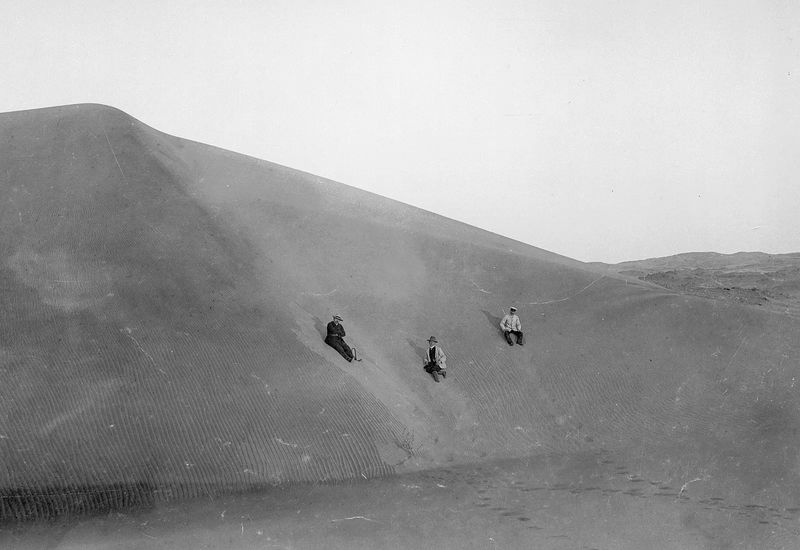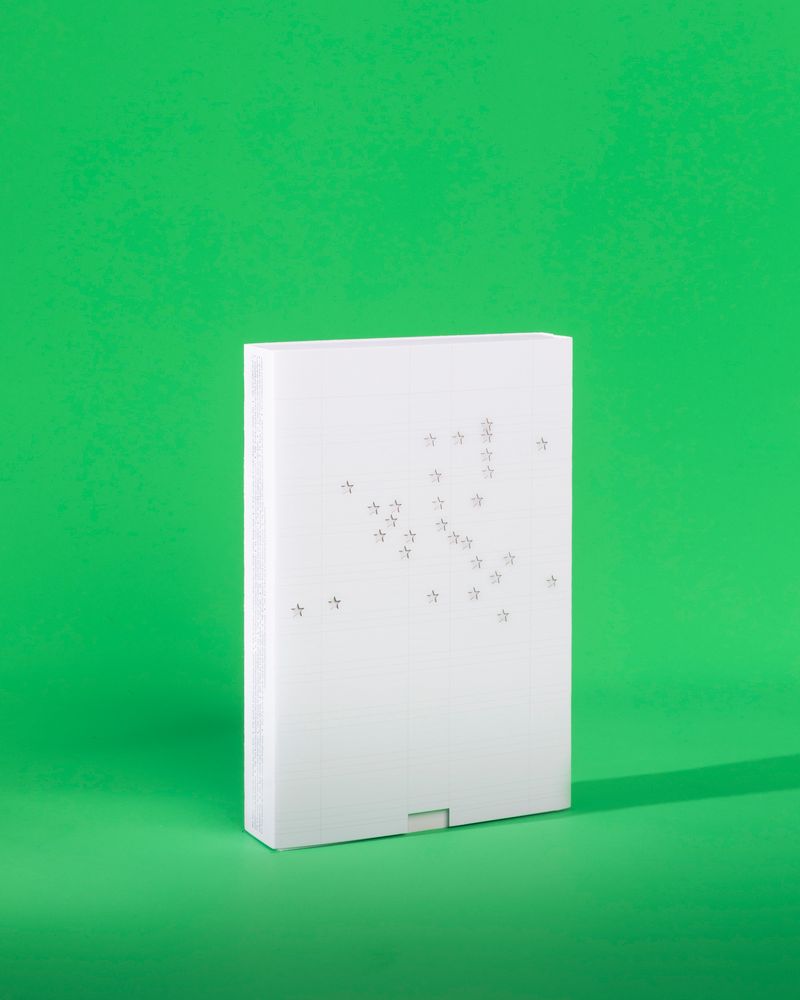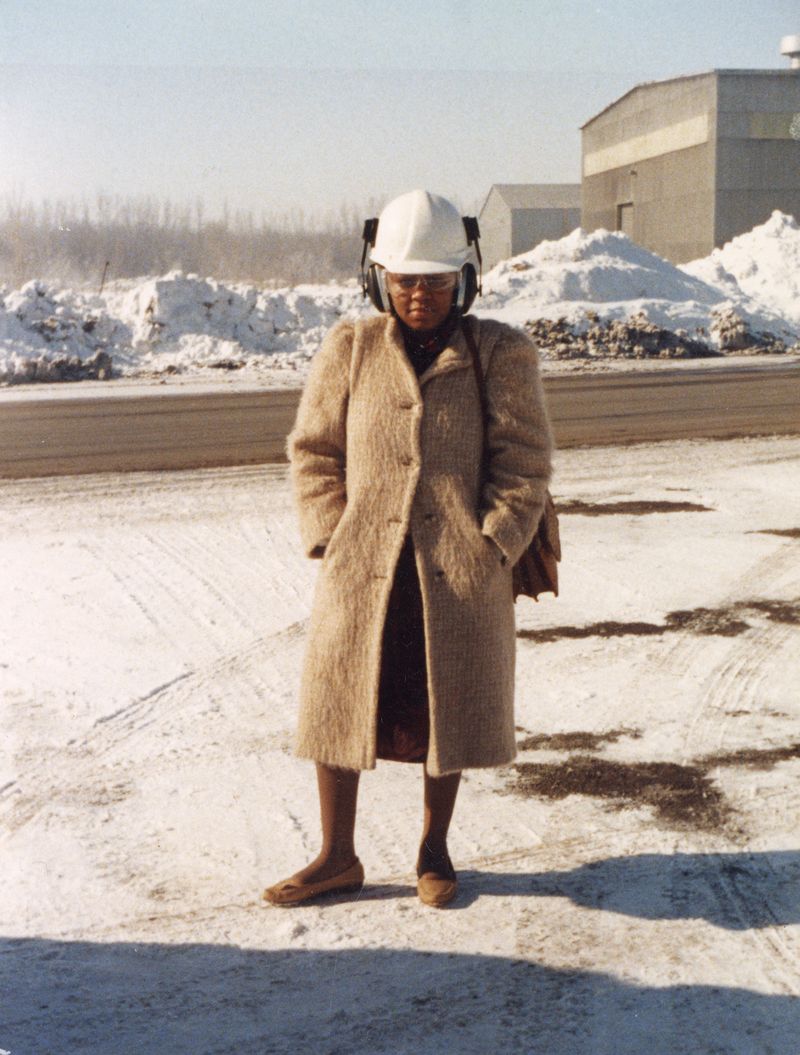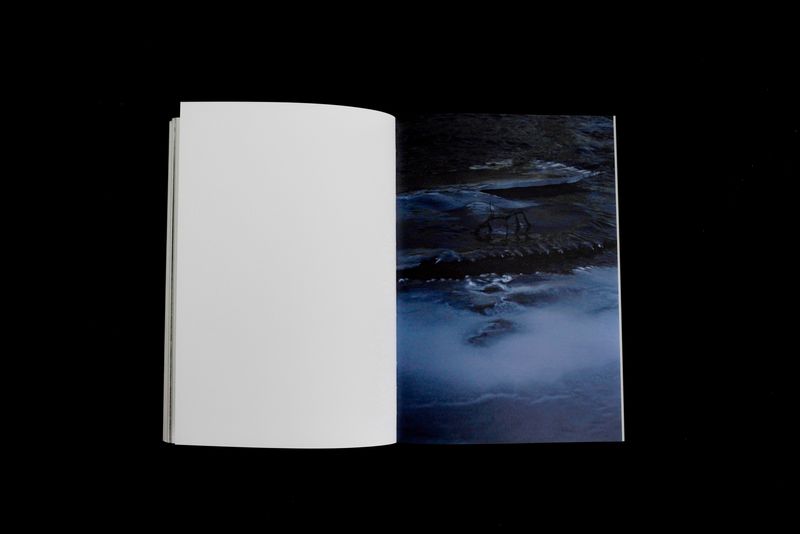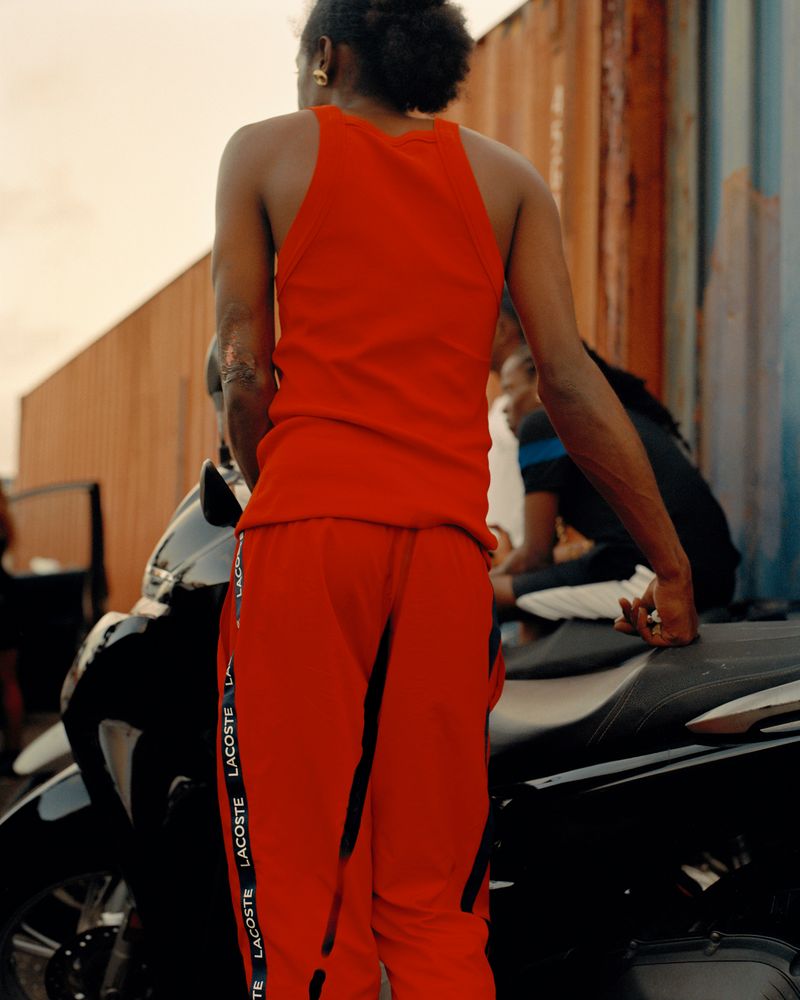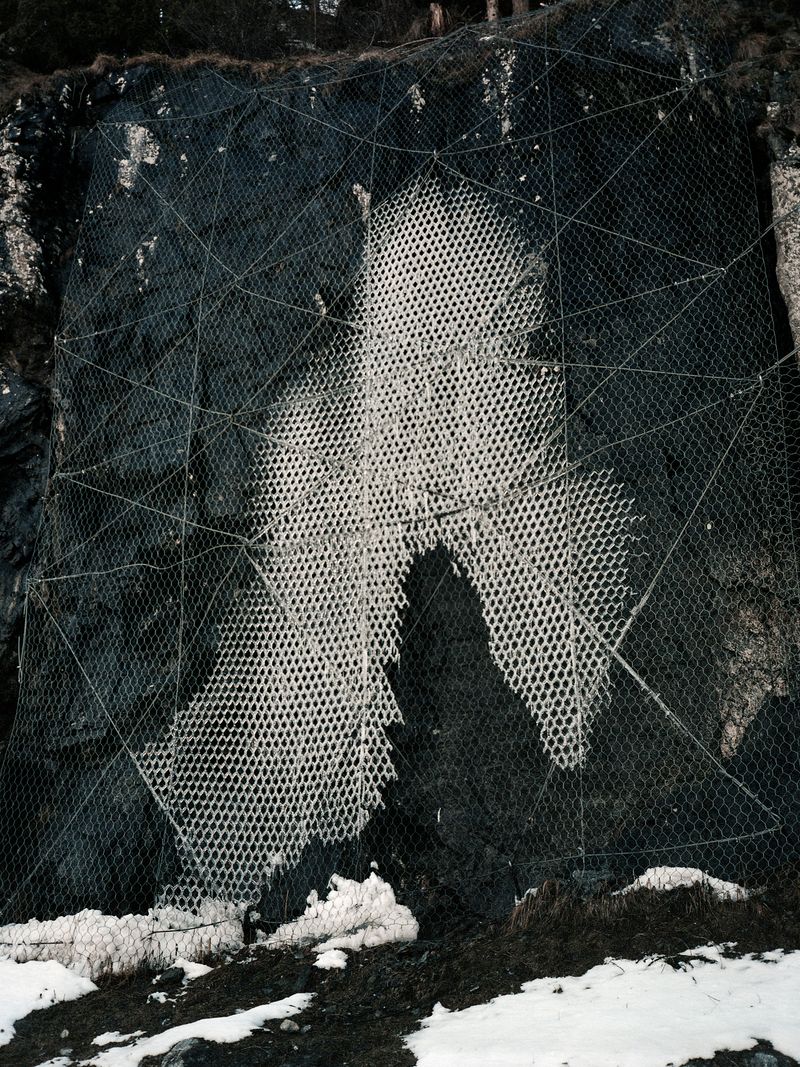Browse The Dummies Shortlisted For PhMuseum's First Publishing Award At Photobook Mania 2025
-
Published8 Oct 2025
-
Author
- Topics Awards, Editorial, Festivals, Photobooks
Selected from the 2025 Photobook Award, thirty projects will be exhibited at our new publishing fair on 18-19 October in Bologna, Italy. Join us to see them live, and attend the results announcement ceremony of this first edition in partnership with MPB.
This article is realised in collaboration with MPB, Europe’s top camera reseller and main partner of the PhMuseum 2025 Photobook Award. Through the open call, one project will be selected to be published as a photobook curated by PhMuseum, who will cover production and distribution costs. In collaboration with PhMuseum, MPB will also identify an author for their Special Mention, granting a €800 voucher to spend on used photo and video gear on mpb.com.
The jury composed of Max Pinckers (Photographer), Yumi Goto (Independent curator, Publisher), Karla Hiraldo Voleau (Photographer), Giuseppe Oliverio (PhMuseum Founding and Artistic Director) and Camilla Marrese (PhMuseum Visual Editor) selected thirty projects as finalists of the PhMuseum 2025 Photobook Award. Here you can have a glimpse through them, while we prepare the physical display at Photobook Mania 2025 – PhMuseum's first photography publishing fair, taking place this 18-19 October in Bologna, Italy. The shortlist will be one of three exhibitions taking place in a greenhouse, accompanying the presence of 23 publishers, a workshop, and more.
Decolonising Shame:
A Legacy Of Control
by Akanksha Pandey
Akanksha Pandey seeks to visually explore the tension between the cultural idea of the “ideal woman” and the actual lived expression of survival. Her work is a quiet rebellion against the binary gendered expectations inherited from colonial morality and religious patriarchy — where to be feminine meant to be passive, modest, and pleasing. In reclaiming the full spectrum of embodied experience, Decolonising Shame: A Legacy Of Control affirms the right to protect, to harden, to be complex — and still be whole. Unfolding through a hybrid visual methodology that combines photography, video, performance, sculpture, and installation, Pandey avoids literal re-enactment, instead focusing on gestures, atmosphere, and memory. Participants in her work collaborate in shaping how they are represented, allowing visual expressions of protection, resistance, and complexity.
Paso del Norte
by Alejandro "Luperca" Morales
Since 2021, Alejandro “Luperca” Morales has been documenting public livestream cameras at the Paso del Norte International Bridge, which connects Ciudad Juárez in Mexico with El Paso in Texas. These cameras, freely accessible online, were not meant to preserve anything—they simply stream. But by watching them in real time, Morales built an archive of daily crossings, deportations, and moments of quiet resistance that often go unseen. He began this project while living in Mexico, unaware he would later be in the U.S. under an F-1 visa. With recent shifts in immigration policy, the work now feels urgent. What started as an observation has become personal, as he now lives with the fear of being deported himself, and that fear shapes how he carries these images. The book is structured in six chapters, each exploring a different layer of the border through livestream stills, government documents, news media, and performative self-portraits.
Wet Ground
by Aria Shahrokhshahi
Wet Ground is a product of Shahrokhshahi’s unique experiences living and volunteering in Ukraine from 2019 to the present day. His images are a departure from the standard visual vocabulary of war, acknowledging its complexity but not ignoring its violent reality. Military conflicts don’t simply destroy buildings and bridges; they shake and steal the land that holds memories for people — where they grew up, had their first kiss, or learned to play an instrument. The title Wet Ground is linked to that — and to the concept of something unstable and constantly shifting, just like the physical, social, and cultural landscape of a country going through a painful but historical transformation. It also comes from Aria's experience of enduring a hard strike during the medical evacuation of civilians from the frontline town of Siversk when he and the crew survived because the ground was wet.
– Edited from Ira Lupu’s original text
Rue Désiré Chevalier
by Claire Cocano
Claire Cocano reinterprets her family's connection to a homeland to which they were never able to return, creating a narrative between past and present, home and exile. A new country, a new start and the trips back and forth of an entire lifetime. This sentence could sum up the journey Cocano’s grandparents undertook in the sixties, after a bilateral agreement between France and Yugoslavia marked the opening of borders and the arrival of Yugoslavs in France. Despite the historical links between the two countries, the contrast was huge. Cocano’s grandparents lived for many years under the illusion of returning home. Their long-delayed return had become impossible. When the war began in 1991, her grandfather started to scratch out any link he found, leaving scars in books and magazines. After her grandparents' death, the flat on Rue Désiré Chevalier was left frozen in time. From there, behind closed doors, Cocano delved into their memories and archives, aiming to understand her own relationship to a country that no longer exists.
Vivarium
by Claudia Jaguaribe
Claudia Jaguaribe’s practice is grounded in a long-standing exploration of the evolving relationship between humanity and nature, particularly as shaped by the Anthropocene. Over the past two decades, photography has served as both a tool and a companion in this journey – reflecting not only ecological changes, but also shifts in the meaning and potential of the photographic image itself. This body of work spans twenty years and forms a dialogue between her early encounters with landscape and nature photography and her current investigations into hybrid environments and generative image-making. The images presented trace the progression of her inquiry: how can nature be represented within a cultural context that is increasingly defined by fragmentation, artificiality, and technological mediation? Combining traces of natural and artificial worlds, Jaguaribe reflects a contemporary experience of nature that is inseparable from human presence and intervention.
I Can Remember It For You
by Czepiel Maciej
As a child, growing up in Germany, Canada, and then Switzerland, Czepiel Maciej would spend hours looking at the family photo albums his parents had created since he was born in Krakow, Poland. Flipping the plastic sheets full of pictures, he would imagine his life’s history. When they arrived in Canada, his name was switched from Maciej to Mathieu, so the Québécois people wouldn’t have too much trouble pronouncing it. When, years later, Maciej and his family arrived in Switzerland, he spoke French, yet a French other kids couldn’t understand: Québécois. He could understand them just fine, but he could feel a gap separating them. Why did his parents first leave Poland? What were the stories behind those family pictures? In his twenties, Maciej started discovering details of a history previously incomplete. To re-appropriate it, he started asking people to call him by his real name: Maciej. From there on, he embarked on a quest to understand who he is. A correspondence of letters between his former and present self enables a reflection on family albums in a context of migration, wondering how memory constructs our stories.
Les mornes, le feu
by Cédrine Scheidig
The French overseas islands of Guadeloupe and Martinique are spaces of hybridity, neither really French nor completely independent from French culture and history. Cédrine Scheidig’s work seeks a different narrative from exotic stereotypes. Contrary to the typical representations of the Caribbean as deserted beaches and lush nature, her focus is on urban practices and the forms of resistance they generate. Les mornes, le feu is indeed anchored in the postcolonial city and its youth, proposing a vibrant exploration of a generation redefining our understanding of French-Caribbean identities today. Between Guadeloupe and Fort-de-France, Scheidig follows a group of mostly young men through their practice of «cabrage», or «rodeo». Beyond the historical legacy of slavery, these people are reclaiming the richness of a local hybrid, ever-evolving culture, drawing on French roots, tied to neighboring English-speaking islands and to cultural influences from the United States. They weave a unique narrative, where the diversity of identities blends harmoniously into a quest for personal and collective expression.
The Shape Of Our Eyes, Other Things I Wouldn't Know
by Davide Sartori
For a long time, Davide Sartori saw his father as a stranger: someone he didn't know how to talk to or spend time with. As he found out about his grandfather's premature death, which forced his coming-of-age father to follow the same career path, he realised that the absence of a traditional paternal model was something they had in common. What does it mean to be a good father? Traditionally, the father has the responsibility to work and provide. Through this distancing from the family, often both physical and emotional, the archetypal man can fulfil his obligations, and thus, his role. Aiming to create a connection, Sartori visited his father’s workplace and invited him to do the same. The Shape Of Our Eyes, Other Things I Wouldn't Know takes form as a series of attempts to get closer, both physically and emotionally. The airport and the photography studio become the backdrops for Sartori and his father’s encounters, while photography serves as a key tool to explore their relationship, in a continuous exchange of roles.
Tomorrow Hotel
by Dragan Saric
Tomorrow Hotel takes you on a journey between longing and belonging, starting from a mandatory quarantine stay in Taiwan in 2021. The hotel room became a metaphor for a liminal waiting room, reflecting on a non-existent Yugoslav identity and the parallels with Taiwan's own history toward independence. Dragan Saric’s work questions how a temporary place can feel like home, and a home can become transient, questioning the identities we carry and the utopias we long for. It addresses the universal struggle of a world that is trying to move on, but finds itself haunted by the ghosts of its own past. As Mark Fisher writes, "A past that cannot disappear is the equivalent of a future that will never arrive." By capturing the timelessness of interiors – both homes and hotels – Tomorrow Hotel becomes a space for reconsolidation. It's a poetic representation of being in-between, offering a way for an individual, or even a nation, to come to terms with its past in order to redefine itself in an ever-changing world.
When He Spoke He Fired Imaginary Shots With His Gun Shaped Hands
by Edgar Martins
When He Spoke He Fired Imaginary Shots With His Gun Shaped Hands explores the boredom, the dark, game-like play, and the performative acts of violence that make the terror of war feel mundane, even scripted. Edgar Martins’ project takes shape as a collection of historical photographs primarily taken by Soviet soldiers between the 1940s and 1980s. The images were sourced from The Archive of Modern Conflict in the UK, and the archives of two friends and photographers, a Ukrainian and a Russian soldier. Their partnership is imbued with a deep historical irony, as their parents fought on the same side within the Soviet Union during WWII and the subsequent Cold War. The reality of the ongoing war in Ukraine transformed the editorial process dramatically, with some of the prints having to be smuggled out of Russia. Arranged in combination with Martins’ own personal images, the photographs in this body of work look at a surreal side of conflict, using the past to confront recent geopolitical events. They examine the recurring cycles of history and the deeply human, often bizarre ways people navigate the fragile threshold between peace and open conflict.
The Archeological Bazaar
by Federico Possati
Driving through the Italian Pianura Padana, a vast flat land that runs from Milan to the Adriatic Sea, one feels like being transported into a mysterious area. The region undertook huge changes, transforming from farmland into a hybrid mesh of fields, factories, malls, and tourist destinations. Federico Possati embarked on many trips exploring this territory. The images of artifacts, objects, and left-behind fragments he collected felt like traces of their shed-over identity. As the project developed, he realized that what fascinated him about these subjects was their inability to be attached to a wider context, to a larger history of the territory itself. These un-archeological finds are at the center of Possati’s new work. Spacing from indecipherable symbols, to lost images, and from abandoned things, to an allegory that describes the origin of this mess, the author embraces a sort of New Archeology that recognizes its shortcomings and presents these subjects as if they were on the booth of a Bazaar, arranged according to the capricious fascination of whoever put them together.
Parallel World Family
by Fujimura Family
Parallel World Family explores the fluid boundaries of daily life—between self and others, humans and nature, and reality and unreality. Based on the belief that intimate personal events hold fundamental and universal questions, this body of work invites us to reconsider our own frameworks, perspectives and world views. The rise and integration of AI technology highlights these boundaries in symbolic and striking ways. Here, AI was instructed to blend two or three original photographs, generating new composite images. These coexist with entirely untouched photographs, creating an intentional ambiguity that makes it difficult to distinguish between the "real" and the "unreal" – a process that reveals the instability of our assumptions. Neither a critique nor a celebration of technology, Parallel World Family is a way to use a non-human entity to visualize the presence of these ever-present, shifting thresholds. Across images of unresolved, layered and fluid divisions, the Japanese duo hopes to inspire recognition of the many unseen worlds that surround us.
It Takes All Kinds
by Greta Valente
It Takes All Kinds documents a series of relationships between humans and non-human beings in Italy's Aosta Valley. It aims to challenge anthropocentrism by recognizing the importance of a more-than-human world and exploring how harmonious cohabitation can be achieved. Whether it be the staff of the Wild Animal Recovery Centre, the Centre of National Reference for Diseases of Wild Animals, a farmer practising extensive livestock farming, or a park ranger, the gaze turned towards the living is never neutral. The environment is a companion to be understood, and from whom to learn. Greta Valente’s images show organizations and individuals seeking protective solutions for coexistence, safeguarding the health of both humans and animals. Even the taxidermy specimens that populate the offices of the Department of Flora are not to be interpreted as trophies, but as witnesses to specific interactions with the wild, each with its own history. It Takes All Kinds advocates for mutual connection, care, contamination, and respect – a form of eudaimonia centered on a harmonious place for humans within the world.
A Circle Of 12 Gold Stars On A Blue Background
by Jan A. Staiger
For decades, European Union politics have been reduced to flags and faces. A Circle Of 12 Gold Stars On A Blue Background aims to break from that visual monotony, seeking images that reflect the complexity and contradictions shaping Europe's most ambitious political construct. Using the colors of the European flag – EC Blue and EC Yellow – as a starting point, Jan A. Staiger’s photographic essay addresses how vague political ideologies are translated into a solid, visual state. The work takes Brussels’ European Quarter as its point of departure, exploring the deliberate visuality of EU political communication. Visitor centres, youth events, merchandise, guided tours – all are directed toward the aesthetics of politics as an element of persuasion. An entire city district as a green screen for the politically imaginary. An entire continent adjacent to it as a less interchangeable backdrop.
There Is No Death
by Jason Hendardy
There Is No Death critiques belief systems—both spiritual and political—by mimicking the methods of Theosophy, a 19th-century movement known for appropriating esoteric ideas from multiple religions. Through layered images and nested books, the project explores how conviction can distort meaning, perception, and historical truth. Jason Hendardy examines the search for meaning within new age spirituality, questioning how it can open people up to misinformation. Theosophy's claims of hidden masters, cosmic cycles, and divine communication invite both curiosity and skepticism, especially given its legacy of appropriating concepts out of context—a gesture mirrored in this book’s own appropriation of forms and its facsimile structure. Hendardy’s work combines contemporary photography with hi-fi video stills and is structured in three sections: learning, death, and belief. As the visual strategies and physical design of the book mimic the mental disorientation of falling into a belief system, There Is No Death is not just a critique, but a sensory echo of belief itself.
Trust Me
by Jinyong Lian
Through a series of uncanny, cinematic tableaux, Jinyong Lian’s work addresses a personal feeling of alienation as an outsider navigating between different cultures. In her work, symbolism and absurdity serve to provoke reflections on what she perceives as an oppressive social reality. By exploring these psychological dynamics, she aims to highlight the often-invisible pressures that shape our interactions. This tension is expressed through fragmented, disjointed scenes, where characters are placed in unsettling, confined environments. This instinctive portrayal of oppression, of self-doubt and spiritual crises, reflects her experiences as an Asian woman and sexual minority grappling with oppressive gender norms and alienation. Trust Me is both a call for individuals to reclaim their own subjectivity and an invitation to open a dialogue with a broader community in times of crisis.
Chester: Staring Down The White Gaze
by Justin Maxon
Chester: Staring Down the White Gaze explores how whiteness and white supremacy function within American visual culture. Co-created by Dr. H. “Herukhuti” Sharif Williams and photographer Justin Maxon, the book turns the white gaze back on itself, making it personal in order to reveal its inner workings. At the heart of the project is a visual glossary of white racial tropes, which uses Maxon’s family archive and pop culture references to analyze how whiteness is manufactured. The book also juxtaposes Maxon's work with that of local artists from Chester, Pennsylvania, challenging mainstream media representations of the city and its residents. Throughout the book, Dr. Williams raises critical questions that prompt readers to consider their own complicity in systems of representation. This dialogue is central to the book’s form and function, allowing readers to witness not only the critique of the white gaze but also the collaborative process of challenging and reimagining it.
Mind The Gap, luv.
by Kate Schultze
Mind The Gap, luv. looks at the aftermath of the Brexit referendum in pro-leave areas like Yorkshire and the West Midlands, capturing youth views, cultural identity, and the drive for independence behind the vote to leave the EU. Developed from the perspective of someone who lived between the UK and Germany, the project offers a unique viewpoint—both intimately connected to and critically removed from British society. Kate Schulze examines the cultural and political implications of Brexit, with particular attention to working-class adolescents and their sense of "Britishness" as a marker of identity. By capturing the prevailing zeitgeist, her work investigates the motivations behind the vote to leave the EU – often made without clear rationale – and the potential long-term effects on the UK's future. It further explores how national identity and political decision-making intersect in a post-Brexit landscape, highlighting the personal stories that underscore a historic political event.
57 Days Of Pictures
by Leonardo Magrelli
57 Days Of Pictures seeks to reinterpret the iconic and legendary Alinari photographic archive. 57 days is how long it would take to look at all the 5 million images collected in it, if one were to look at one image per second, day and night, without interruptions. Commissioned by Camera - Italian Center for Photography, the project sifts through the Alinari’s 223,940 digitized images. The resulting book features 57 pairs of images, one for each day and one for each night. These are selected to demonstrate the archive’s heterogeneity, and cropped to exaggerate or subvert their original meaning. Captions are separated from their corresponding images and arranged chronologically, mismatching the book's sequence and encouraging a sense of suspension and frustration. An eerie and unsettling atmosphere pervades the entire sequence, where the uncanny seamlessly oscillates between irony and moments of stark violence. The photographs tell the history of Italy, Europe, and their gaze on the rest of the world. Ultimately, they tell the story of photography itself.
The Only Human Thing
by Marcel Top
The Only Human Thing examines common patterns behind surveillance technologies, looking at how private companies buy data to train their algorithms and at their use of outsourced human labour. Surveillance algorithms are trained on low-quality images of people wearing disguises, often created by workers paid an average of two dollars per hour. These images are data rather than portraits. Top created a poisoned dataset containing more than 1,500 self-portraits and videos. It was designed to be attractive to surveillance companies, ideal for training algorithms to perform better during protests. Top’s dataset is poisoned by a tiny red square at the center of 10% of the images and an inaccurate label, which corrupts the data. If a company uses this dataset, the corrupted data could deteriorate their algorithm, making it unreliable. The Only Human Thing explores data poisoning as a way to resist oppressive surveillance, using the very methods of surveillance against the companies that create them.
Small Meteors
by Masina Pinheiro & Gal Cipreste
Two lives are intertwined in the space of Small Meteors: Masina's experience of a childhood stoning for being gender-nonconforming and Gal's journey of body transition and non-binary identity within a religious family. Masina, nicknamed Hiroshima after their birth date, was stoned at age 10 in Rio de Janeiro. In another place and time, Gal was beginning to understand the processes of their own body and identity. They were born on the same day as Harry S. Truman, the president who authorized the atomic bombing. These coincidences frame the work's themes of violence and transformation. The series is a conceptual critique of social injustice and normative structures. Instead of focusing on the body, it uses symbolic arrangements, still-life compositions, and abstract photography to visualize memories of homophobic violence and hate crimes. Drawing on surrealist and cinematic aesthetics, the project foregrounds the non-binary and gender-queer identities of Brazil's LGBTQIA+ community. The work does not seek to be a spectacle of pain, but a celebration of free childhoods, transforming memory into an act of care.
The Art Of Losing
by Najhmi Cartagena
The Art of Losing explores the four-year journey of a daughter navigating her mother’s battle with Amyotrophic Lateral Sclerosis (ALS). The book is a moving tribute to their bond, weaving together family photos, medical records, emails, diary entries, and contemporary photographs. ALS is a time-dictated disease that attacks the muscles of the human body in phases. The photobook explores the emotional landscape that unfolds when a loved one receives this diagnosis. It delves in the helplessness and despair that accompany an illness which progressively attacks the body while leaving the mind intact. The author uses a multi-layered approach to tell her story, creating a narrative that spans her mother Vero's life, from childhood to the final stages of the disease. Through intimate internal dialogue and a compelling blend of archival sources, The Art of Losing traces the evolution of their relationship. It is a heartfelt exploration of love, loss, and the healing journey that follows, creating a bridge between medicine and art.
Non sei più tornato
by Serena Radicioli
In 2012, Serena Radicioli’s father was killed in a clash between criminal groups. Growing up, she never knew what his real job was. On the night of the incident, she was waiting for him – yet he never came home. His death was sudden, and her family never talks about it. With many unanswered questions, she began researching and exploring the facts ten years later. Non sei più tornato (You Never Came Back) uses a blend of archival, family, and contemporary images to explore absence and legacy, turning photography into a dialogue between what is gone and what remains. A narrative is built out of fragmented memories and scattered information. Its visual language refers to instant photography to reflect the fragmented nature of memory. This structure invites the viewer to take an active role in interpreting and reconstructing meaning. Non sei più tornato is not merely an attempt to reconstruct a story, but an investigation into photography as a tool for understanding and transformation. It acknowledges that photography cannot restore what is absent, but it can make absence visible.
What Will Be Different Tomorrow?
by Steven Natusch
The weight of war, pandemics, climate change, and the breakneck speed of technological advancements is palpable, casting an ominous shadow over the future. Grappling with the meaning of existence, life itself feels increasingly fragile and uncertain. One must ponder, can a human being truly exist without an identity, without content? What Will Be Different Tomorrow? is a photographic essay that focuses on nothingness. The negation of existence has been the subject of contemplation for ages, pervading language, philosophy, and art. From this arises the possibility of either being everything or nothing at all. Examining the concept, one quickly comes up against the limits of logical thinking and gets caught in paradoxes. But it is precisely this contradictoriness that creates the framework for expressing a relationship with the world characterised by opposites. Steven Natusch’s work reflects a constant search for importance within a transience of life and its uncertainty. “The world may be in flux, but I find solace in catching a glimpse of what is likely not to be found”.
City Birds
by Sushant
City Birds is a poetic reflection on urban coexistence and the subtle ways environments shape us all. It explores the metropolis as a landscape, highlighting how residents respond, adapt, and transform within their surroundings. Employing a mixed-methods approach, Sushant examines the symbiotic relationships between Mumbai’s two most ubiquitous inhabitants: humans and pigeons. For both, the city holds a lure of shelter and livelihood. Their behaviour reflects one another – shaped by the same pressures, opportunities, and rhythms of city life. Not only do we share similar expectations of the city – harbouring an impossible utopian quest within each of us – but pigeons’ nonverbal cues and behaviours have also come to resemble those of humans, as if the city affects us similarly, changing and molding us indiscriminately and impartially.
We Didn’t Choose To Be Born Here
by Thero Makepe
We Didn’t Choose to be Born Here explores the socio-political fabric of Botswana and South Africa through a personal lens. Blending staged portraits, documentary images, and re-enactments, Thero Makepe weaves together family stories with national history. The work juxtaposes the lives of two relatives: the author's grandfather, a jazz musician who fled Apartheid South Africa for a peaceful life in Botswana, and his great-uncle, a prominent anti-Apartheid activist who was imprisoned on Robben Island. We Didn’t Choose To Be Born Here spans 60 years of history in Botswana and South Africa, across tragic events such as the SADF raid on Gaborone in 1985, survived by Makepe’s grandparents, as well as through examples of resilience and hope. The intergenerational love for jazz music is one of them – an anchor and an escape through turmoil. As he collects material and re-enacts moments in collaboration with his relatives, Makepe becomes a custodian of memory, rather than a single author.
Lüderitz
by Tim Gassauer
Lüderitz deals with the German colonial period in Namibia by linking two places with the same Germany name, located 12,000 kilometers apart: Lüderitz, Germany, the ancestral home of the von Lüderitz family, and Lüderitz, Namibia, the coastal town fraudulently acquired by merchant Adolf Lüderitz in 1883. This act laid the foundation for the colonization of what was then known as German South West Africa. Tim Gassauer weaves together photographs of landscapes, architecture, and portraits with archival images. Images of colonial-era buildings set against barren rock formations are juxtaposed with rural village scenes, creating overlays and connections that renegotiate the relationship between German concepts of Heimat (home) and Namibia's violent colonial history. Through this interplay, traces of the past and reflections of the postcolonial present become visible. The result is a visual impulse for multidirectional remembrance, where history remains active and perceptible in the present.
Duration
by Yuan Lin
Duration is a self-rescue creative experiment during a time of illness. In it, Yuan Lin attempts to invoke two different states of consciousness – trauma and meditation – through the act of photography. This process serves as a means of self-observation, healing, and creative practice. The creative effort is deeply intertwined with her lived experience, delving into the subtle boundaries between trauma and passion, dreams, memories and imagination, as well as the physical and spiritual dimensions of time and space. Through photography, she seeks pathways to self-awareness and to integrate the process of healing. The book is divided into three sections: Duration, Fruit, and a text, which return to one another in a cyclical journey. This structure mirrors both lived experience and Henri Bergson’s theory of duration: time as a continuous flow where past, present, and future are interwoven. Within this flow, humanity’s innate drive to transcend the past through creativity and the impulse of living become intertwined, forming the essence of life’s experience.
Where The Ocean Ends, The Mountains Becoming.
by Yuchen Wang
When he was a child, Yuchen Wang’s father once told him, “If one day I am diagnosed with a terminal illness, take me out to sea. I will jump into the water and end my life.” Those words sank deep into the depths of his heart. From that moment on, the ocean was no longer a symbol of vastness and freedom, but a metaphor for death, a prophecy of his father's impending disappearance. So Wang feared the sea, feared that the endless blue would swallow up his last memories of his father. He fled to the mountains – to the place farthest from the sea, to the opposite side of the ocean's edge. There, there are no tides, no storms, no moment when his father will leap into the water. He is not fleeing from him, but trying to break free from that inescapable prophecy, to wake up from the nightmare that he will eventually leave. At that moment, Wang began his journey with him, turning his back on the ocean and heading toward the mountains. Turning his back on death, trying to embrace that love that had not yet been severed.
Whisper
by Xuechun Wang
Whisper is a photographic archive of trees, documenting their distinct characteristics across diverse locations. It looks at their differences across urban and wild settings, across the north and south of China, and across different nations. Wang collects ID photos of these plants in the attempt to select and record a botanical archive through the perspective of his personal memory. The graphic design of the book reflects its archival theme. The outer cover resembles a document box, and the pages are loose-leaf, held together with metal clips. The inner text is printed on Japanese washi paper, whose texture and translucent quality evoke the ruggedness of the trees. This semi-transparent effect allows images to interact with those on the following pages, creating a layered visual experience.
--------------
About MPB
For over 10 years, MPB has made used photo and video gear more accessible. With experts in Berlin checking and individually photographing every item, MPB offers camera equipment you can trust, with a free twelve-month guarantee for added peace of mind.
More than half of us have a camera at home we’re not using. Find out exactly how much your kit is worth with a free instant quote from MPB. Take advantage of free, insured shopping to send in your gear, and get paid directly into your bank account.

